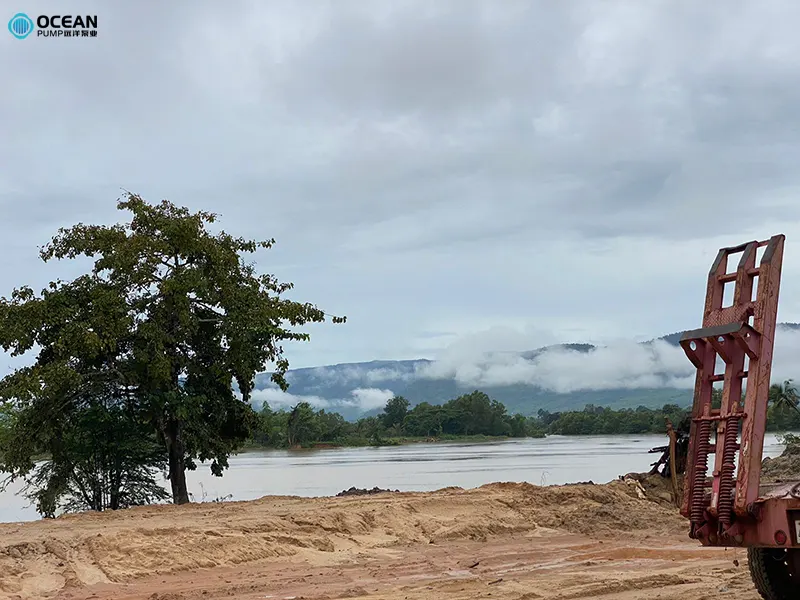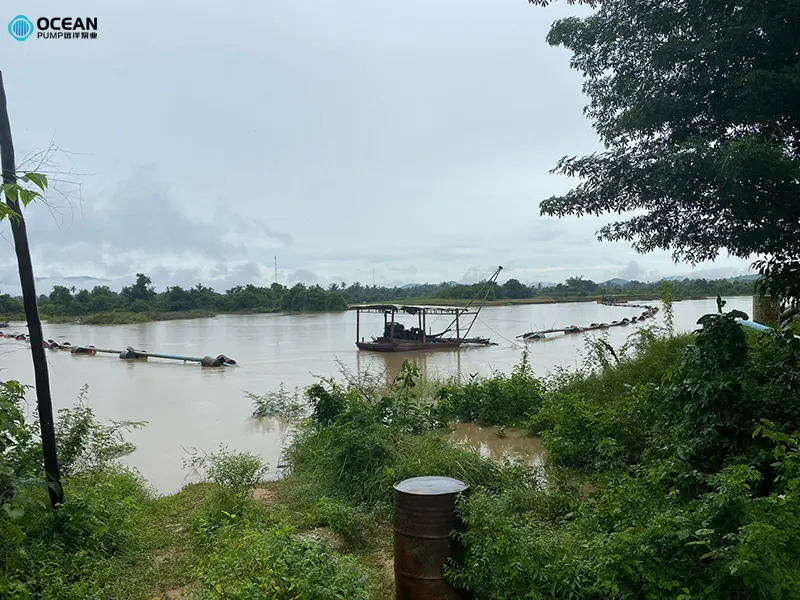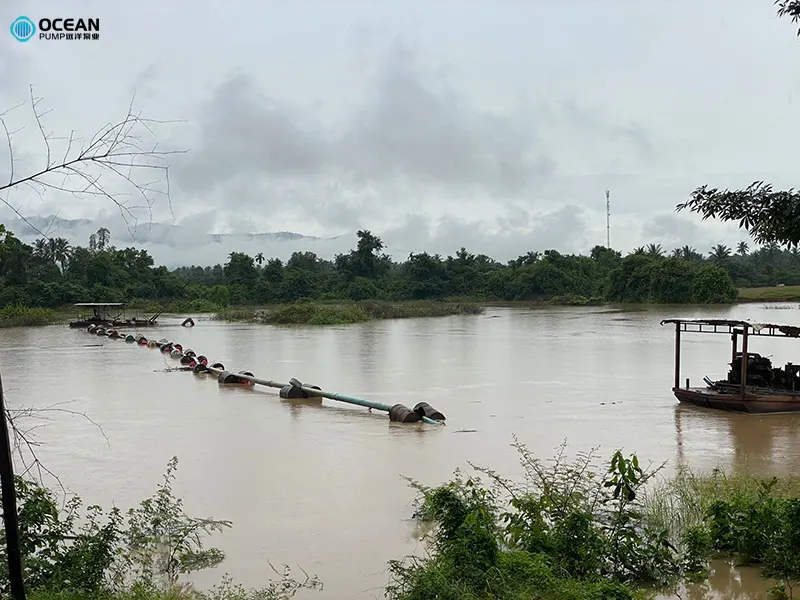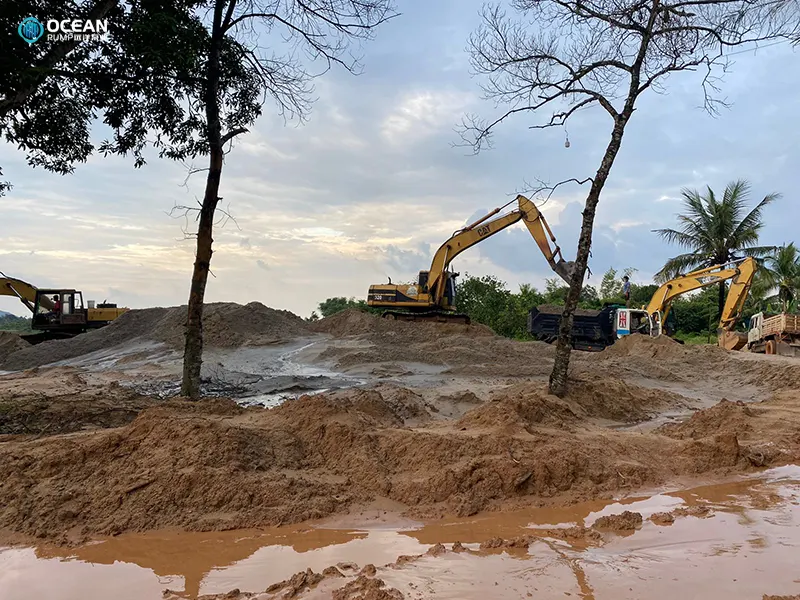Analysis of African Sand Pumping Site and 10-inch Small Sand Ship Operation
On this sand pumping site in Africa, a unique operational scene unfolds. The river water, with sand slurry£¬takes on a turbid hue. The sand pumping ship stands quietly, with its long pipeline stretching across the river like a giant python. By virtue of high-pressure flushing technology and taking advantage of the soft nature of the sand, high-pressure water streams impact the sand layer, loosening and suspending the sand particles for efficient extraction.
Due to the softness of the sand, the high-pressure flushing method shows remarkable advantages. The high-pressure water flow, like a powerful "blade", impacts the sand layer quickly with precise and strong force. When the high-pressure water comes into contact with the soft sand, it instantly breaks the loose structure between the sand particles by virtue of huge pressure, making the sand quickly suspend and become extractable. Cooperating with the sand pumping equipment, it efficiently extracts and transports the sand. At a pumping depth of 15m, high-pressure flushing can effectively disturb the sand layer, ensuring a stable sand output of 100 tons and smoother transmission at a discharge distance of 200m, providing an efficient and suitable operation plan for such sand pumping projects in Africa.


At the African sand pumping site, the 10-inch small sand ship is the main character. With its compact figure, it can achieve a pumping depth of 15 meters, efficiently produce 100 tons of sand per hour, and easily handle a discharge distance of 200 meters. By means of high-pressure flushing of the soft sand layer and in cooperation with onshore equipment, it ensures the orderly progress of the sand pumping operation.
Main components and their functions of a 10-inch small sand mining vessel
For a 10-inch small sand boat to achieve efficient operation with a pumping depth of 15m, a sand output of 100 tons/h, and a discharge distance of 200m, its main components and their functions are as follows:
- Sand Pump: As the core component, it is responsible for extracting river sand. Its strong suction can draw sand from the bottom of the water 15 meters deep, and it must have good wear resistance to cope with the scouring of sand-containing water flow, ensuring a sand output of 100 tons per hour.
- Power System: Usually composed of an engine, etc., it provides power for the sand pump, pipeline transportation, etc., ensuring the normal operation of all components of the sand ship and meeting the power needs of long-distance discharge and long-term continuous operation.
- Transport Pipeline: It is used to transport the extracted sand to the designated location. The pipe diameter is adapted to the 10-inch sand ship and has a certain pressure resistance, ensuring stable sand transportation at a 200-meter discharge distance and reducing blockages.
- High-pressure Flushing Device: Aiming at the soft sand, it sprays high-pressure water flow through components such as high-pressure nozzles to impact the sand layer, making it easier to extract the sand.
- Hull Structure: It provides a stable operation platform, ensuring the balance and stability of the sand ship during operation on the water surface. At the same time, it must adapt to complex water environments and carry various equipment and personnel in the sand pumping operation.


The hull structure has a significant impact on the stability of the 10-inch small sand ship.
Mainly reflected in the following aspects:
- Hull Size and Center of Gravity: The length-width ratio of the hull must be adapted to the operation requirements. An overly narrow hull is prone to rollover, and an overly short one has poor longitudinal stability. A reasonable design can lower the center of gravity, and with ballast devices (such as counterweights), it can offset the unbalanced force caused by the deviation of the pipeline during sand pumping.
- Hull Material and Strength: The hull welded with high-strength steel can resist the impact of water flow and the load of sand piles, avoiding the shift of the center of gravity caused by deformation, and can reduce shaking especially in complex waters in Africa.
- Bottom Structure Design: A flat bottom or shallow draft design is suitable for shallow water operation. Adding stabilizing fins or skirts at the bottom can enhance the ability to resist lateral water push, ensuring that the hull does not shift during high-pressure flushing and sand pumping.
This structural design enables the small sand ship to maintain stability in operations with a pumping depth of 15 meters and a discharge distance of 200 meters, ensuring an hourly sand output efficiency of 100 tons. For details about the equipment.
please contact
Doris Chen10 inchc
WhatApp: +86 18562293319
Email: oc@tsbeng.com
-
WhatsApp
-
E-MailE-Mail:oc@tsbeng.com
-
WeChatWeChat:yychen19







